Euskal jaiak or the most popular Basque celebrations
The festivities of the Basque Country (Euskal Herria), more commonly known here as "euskal jaiak" or "herriko jaixek" (local festivities), are, without a doubt, the best plan you can make during your stay in Bilbao, and... what plans you'll make! This isn't just what I, having lived here all my live, would say, but something that travellers and exchange students guarantee. In fact, there's no better way to soak up our culture, our music and our traditions. You won't find a better way of submerging yourself into our unique form of festivities.
WHAT OUR CELEBRATIONS ARE LIKE
Normally celebrations of any town in Euskal Herria are full of symbols and cultural references. Here I'll explain one by one what the music of our celebrations is like, what we eat and drink, which cultural elements you'll see during the celebrations (if you haven't drank too much, that is) and even what time you can party till.
Music
Most of the music you'll hear will be in Basque (you can read my article about Basque to learn some of the more traditional and well-known songs). Even so, they usually set up tents with DJs sure to feed the party with reggaetón and commercial music. Aka the most popular songs of the moment.
In any case, the biggest selling point of these euskaldunes festivals (or Basque festivals) is that local governments try to book music bands, so the option of live music is always there. Depending on the town, its population and the money that the councillors are willing to spend on culture and recreation, the invited artists are of either greater or lesser repute, they either sing in Basque, Castellan or in English. With Bilbao celebrations you'll find a bit of everything, but in the smaller towns like Galdakao you can just enjoy local musicians like Berri Txarrak or Gaitbu.
Asides from the concerts, another essential part of a festival are the "erromeriak". The erromeria taldeak (like Izei, Oxobi) are music groups that can resemble orchestras from outside of the Basque Country. These musicians sing and play popular, traditional and more modern songs (usually covers) to liven the crowds. Their performances are usually really busy because everyone loves them.
Lastly, moving away from the alcohol fuelled parties at night, if you have the chance, I'd recommend that you go to a popular day celebration and indulge in the traditional music of the Basque dances ("euskal dantzak"). The instruments that are more often used in these celebrations are the trikitrixa (a small accordion that has a really district sound), the tambourine, the txistu (a type of flute that is played with one hand, freeing the other for a percussion instrument) and the txalaparta (a wooden percussion instrument). The traditional dances of our culture are art in its purest form, really lively and worthy of watching, you're bound to love them!

Photo 1. This is our traditional trikitrixa
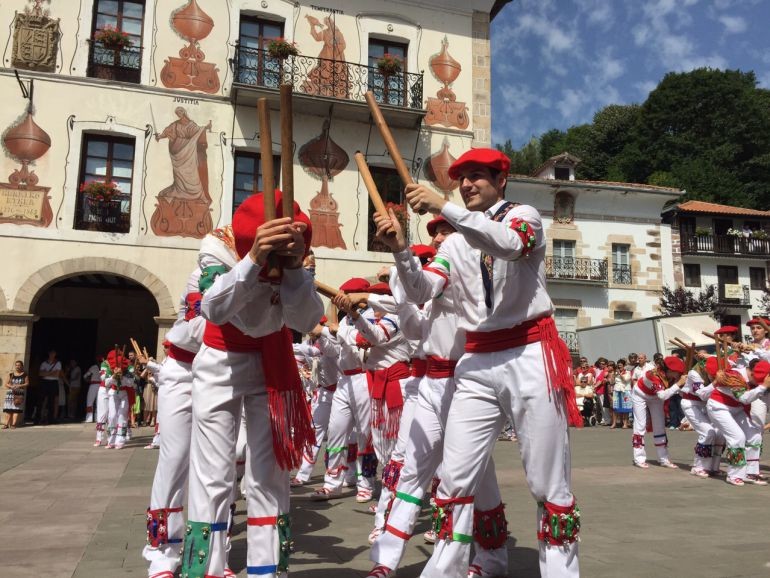
Photo 2. Basque Dances.
Food and drink
What to drink
Generally, nowadays, celebrations anywhere in the world wouldn't be without any classic beverages like wine, beer and spirits like vodka, gin and rum.
Young people generally opt for "botellón", which for those who don't know, consists of bringing your bottle of alcohol (vodka, rum, gin, wine, etc), a fizzy drink as a mixer and the glass in which you prepare and drink it. This is all bought earlier at the supermarket. Therefore, the festivities don't cost you so much.
In any case, going to the bar isn't a tradition that's been lost. In fact, many people who do the famous "botellón", also go to the bar. In the "euskal jaiak", the bars are in the txosnas (I expand on this below). There, they usually serve you a kalimotxo, beer or other simple drink.
Depending on the type of festival you're at, you'll see more people drinking one type of alcohol than another. Meaning, if you're at the popular celebration of Santo Tomás, you'll mostly see people drinking "sagardo", which is what cider is called here. However, outside of Santo Tomás, the most popular alcoholic drink is the kalimotxo, made by mixing red wine and Coca-cola. Don't leave without trying it!

Photo 3. Kalimotxos.
What to eat
This can change a lot depending on the festival. As I've said, in Santo Tomás it's common to drink cider. So, to accompany the cider, it's common to eat talo (Basque tart). What exactly is talo? Talo is a typical dish from our region, made from maize flour and water, and grilled. It's similar to arepa (corn tortilla traditional in Colombia and Venezuela) or a large Mexican tortilla. However, it's less solid, less nutritious and less brittle. Personally, I prefer it, and it's usually eaten with txistorra (a thinner chorizo, traditional to local cuisine), fried chorizo, blood sausage, bacon or cheese. It's a delicacy!
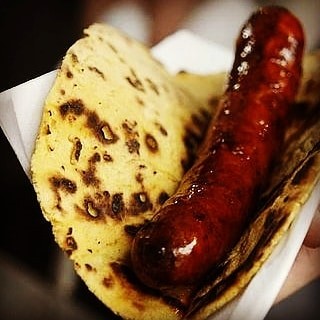
Photo 4. Talo and chorizo.
In traditional cooking competitions held in many of our popular festivals (I talk about this below), they cook marmitako or potato omelette. Marmitako is a traditional local dish that is basically a potato stew. On the other hand, we have potato omelette competitions, but I think you already know what they are.
Our traditional "pintxos" are also something you can enjoy, you'll find them in any of the bars in the city hosting the festival. I'll shortly write a post with more details about "pintxos".
Cultural elements of our festivals
Txosnak
"Txosnas" is our name for places where kalimotxo, and less often beer and kubatas, are served during the celebrations.
They are, so to speak, "tents" where you can listen to music while you drink and dance with your friends. Basically, they are "collapsible bars". They are bars that are set up in the regional festivals of the Basque Country and Navarra.
In Aste Nagusia (La Semana Santa or The Great Week in Bilbao), the txosnas play a key role. During this week, you'll see a bigger variety of txosnas located in the festival grounds of El Arenal, between the Arriaga Theatre and the Government. Each txosna belongs to a konpartsa, a group of volunteers who are responsible for setting it up. The txosnas can belong to a certain political party or association, like the txosna named "Pinpilinpauxa", the tsoxna of the LGBTI+ collective (and one of the txosnas with the best atmospheres!).
So you get an idea of the importance of these bars, here's a map of all the bars in Aste Nagusia 2018:
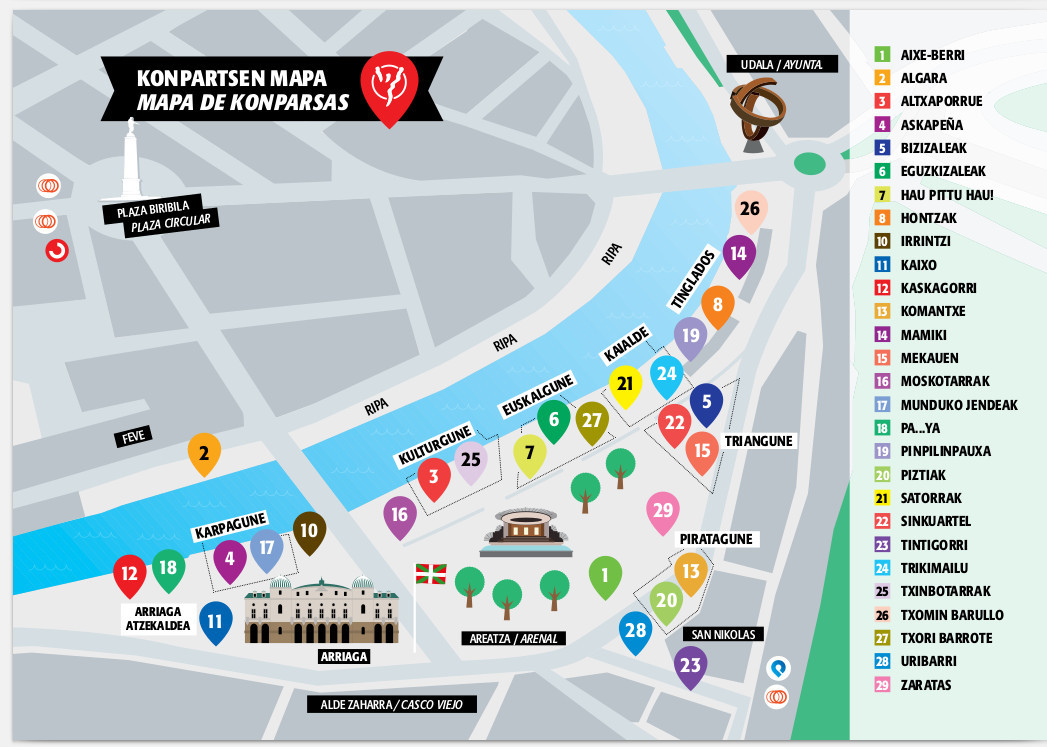
Festive Scarves
Although there's a big debate around whether the blue and white checkered scarf is the traditional scarf of our celebrations or not, I can guarantee you won't look out of place if you wear it.
It's also the quintessential scarf of the falleros (the scarf that people in Las Fallas, Valencia wear) but it's also the scarf we wear during all festivities. You can find them in any shop. Below you'll find a photo of one:
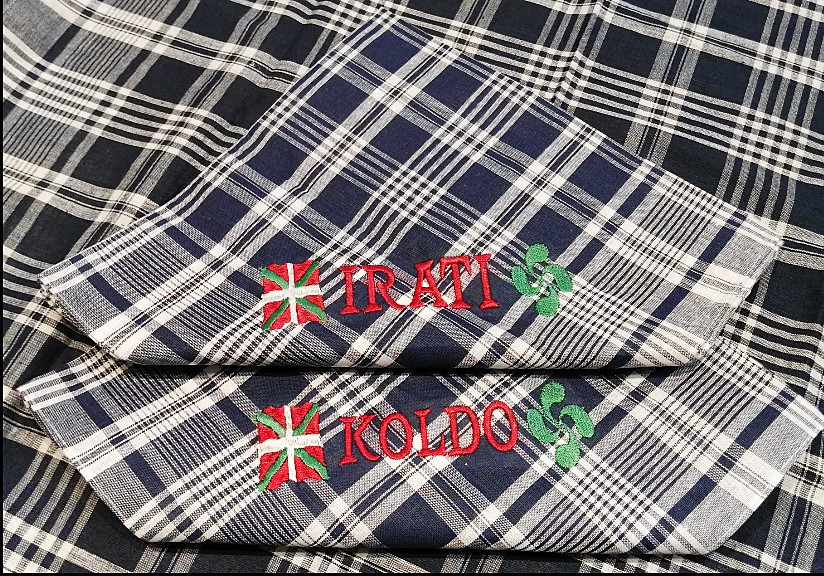
Schedules
Depending on where you come from the timetables we stick to for our celebrations can seem a bit mad. Either way, there are activities from sunrise to sunset meaning you can go to the celebrations whenever is best for you.
The daytime activities and celebrations are usually directed towards a younger audience. Meaning, in the morning and during the afternoon you'll find inflatables, performances, puppet shows, etc. That being said, traditional marmitako and potato omelette competitions are also held during the day, as well as Basque dance performances.
Normally young adults don't go to these types of events when in reality they're great experiences. Then, when you start getting older, you start realising the value of these types of activities more (for example like my friends and I). Therefore, if you're an exchange student, I recommend you attend the daytime options.
Of course at night there's music in the txosnas until the early morning where you can drink and dance (and enjoy yourself obviously).
BASQUE CELEBRATIONS YOU CAN'T MISS
Aste Nagusia or The Great Week in Bilbao, my favourite week of the year!
As a local, it's my favourite week of the year. But people from abroad who've had the opportunity of experiencing our Great Week or Aste Nagusia and the spectacles we hold also agree. For nine days the festival and atmosphere take over the city and thousands of people have the opportunity to enjoy a wide range of cultural activities, for all tastes and colours.
The origins of our Great Week seem to be quite recent. From what I know, it was 1978 when various organisations decided to collaborate and give ideas towards the creation of a Great Week in Bilbao, given that beforehand Bilbao didn't have any important Summer events like this. From there arose what in barely thirty five years has become one of the most famous celebrations in the Basque Country.
Aste Nagusia starts with the txupinazo and an opening speech. After the town crier, the person responsable for reading the proclamation announcing the festivities and encouraging people to attend, gives his speech, Marijaia - the symbol of our festivities - appears on the balcony of the Arriaga Theatre to greet and officially start the Semana Grande (Big Week). Everyone sings and recites the official song of Marijaia, composed by Edorta Jimenez with Kepa Junkera on vocals, entitled "Badator Marijaia" (I've added the lyrics below so you can learn them) whilst we get dirty with kalimotxo, eggs and other crap, dancing and celebrating that the best week of the year has started.
After nine intense days of celebrations, Asta Nagusia finishes with the Marijaia fire in the same square where txupinazo is celebrated.
This is Marijaia. She's blonde, with reddish cheeks, always raising her arms high, symbol of dance and revelry.
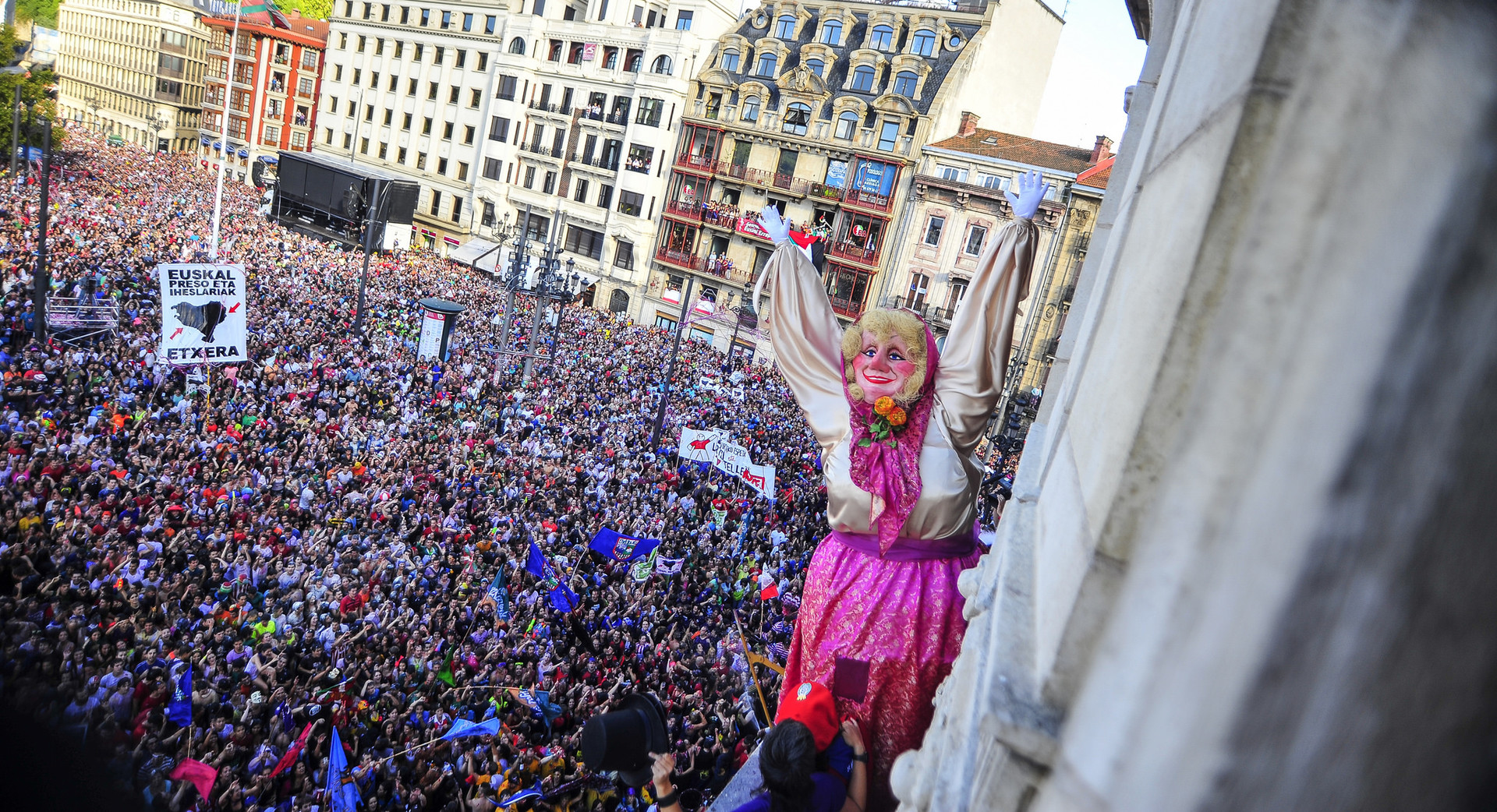
As I mentioned in the "Txosnak" section, the "konspartsak" or troupes are the heart of Bilbao's Semana Grande. They're groups of friends (called "cuadrillas" - teams) that are organised to make the fiestas more dynamic through the txoznas of El Arenal. The troupes meet up during Carnival and the Santo Tomás Fair (see below for more details). Today, there are more than thirty troupes, including some of the oldest ones such as Txomin Barullo, Satorrak, or Pinpilinpauxa.
During the Semana Grande the Villa de Bilbao International Firework Competition is held where, every night of the week features a firework show.
Santo Tomás
This celebration, similar to Aste Nagusia, is one of the most important in Bilbao and Euskal Herria. The origin is a popular market that is held every year on the 21st of December.
The market of Santo Tomás is held in the Plaza del Arenal and the Plaza Nueva. Every year more and more people come to celebrate, in 2018 there were more than 200,000!
Basically, Santo Tomás marks the start of Christmas. Despite being celebrated in various municipalities of the Basque Country (Azpeitia, Lekeitio, Errenteria, Irun, Hondarribia, Usurbil and Arrasate/Mondragón), Bilbao has the best reception.
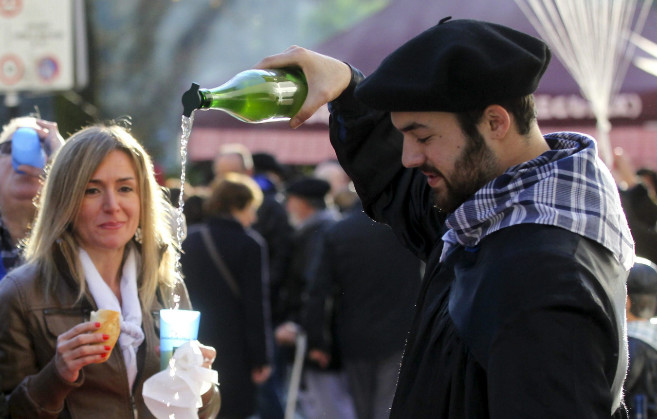
It's a festival for sampling food although it also hosts local dance and traditional music. If you get the chance to go to Santo Tomás, don't go before trying the chorizo, the talo and the cider. You'll also get the chance to try cheese, txakoli, doughnuts, honey, sweets, fruit and vegetables.
As for the music that accompanies the festivities of Santo Tomás, it is worth mentioning bertsolaris, trikitilaris, txalapartaris and various musical groups that liven up the day.
San Fermín
This should be the festival you recognise the most. The celebrations of San Fermín are recognised worldwide and have become a really important tourist attraction in the Navarra capital, Iruña (or Pamploma, in Spanish).

The week starts on the 6th July with the "lanzamiento del chupinazo" (a rocket fired to mark the start of the celebrations) from the Pamploma government balcony, and finishes at 12am on the 14th July with the goodbye song Pobre de mí...
The most characteristic feature of the celebrations are the "encierros" (bull running). The encierros are races with men and women in front of 6 bulls that will be fought in the afternoon in the bullfight and 6 tame or docile bulls. These races are usually around one kilometre and finish in the bullring. The popular encierros take place every day at 8am between the 7th-14th July. They usually last between two and three minutes.
Gasteizko Jaiak - Semana de la Virgen Blanca (Week of the White Virgin)
These celebrations are held between the 4th-9th August. The most notable feature of these is the lowering of Celedón from the bell tower of San Miguel to a balcony in the Plaza de la Virgen Blanca, that's what gets the party started!
But, how is Celedón? Celedón is the character with an umbrella created to honor Celedonio Alzola, a native of Alava who every year attended the Fiestas de La Blanca in Vitoria and invited all citizens to join in.
Each year, someone dresses as Celedón for the lowering which starts the Semana Grande in the capital city of Alava. Since 2016 this has been Gorka Ortiz from Urbina.

Donostiako Aste Nagusia - Semana Grande de San Sebastián
The Semana Grande always takes place the week starting 15th August, Saturday to Saturday, in the city of San Sebastián.
The traditional competition of fireworks are what stand out during this week, each night a firework display takes place in the Alderdi Eder gardens, next to the Donostia City Hall.
Carnavales de Tolosa
These are the most important carnivals in the Basque Country. The festival starts on Fat Thursday or "Ostegun Gizena" in Basque. It is on this day at noon when the town crier reads his proclamation and the chupín is launched.
After Fat Thursday, comes 'Skinny Friday', known as "Ostiral Mehea" in Basque. On this day you can enjoy a show whose protagonists are locals from the town of Tolosa.
The biggest day after Fat Thursday is Saturday (Zaldunita Bezpera), the day in which the Tamborradas are held. Sunday follows, when the official dress code is pyjamas. The most important days to dress up are Monday and Tuesday, Astelenita and Asteartita respectively. In fact, Tuesday is the last day since the burial of the sardines which closes the carnival week in Tolosa happens on Tuesday night.

If you're here during Carnival, you have to come to Tolosa. Despite the media coverage they may get, they have nothing to be jealous of from any other Carnival!
Tamborrada
A celebration which is held on the 20th of January in Donostia- San Sebastián and Azpeitia, in honour of their patron saint.
In this festival, the troupes animate the people to the rhythm of drums. The festival starts at midnight and lasts for 24 hours during which your experience will be accompanied by the popular soundtrack of drums and barrels. The members of these bands are dressed as cooks and soldiers.
It's an interesting festival that I recommend a lot. So while the drumming is in the background, the rest of us are drinking, dancing and singing in the various bars of the capital of Gipuzkoa.
Olentzero eguna
I'm getting a post together about this character, a character so important in our culture, and I'll give you all the details there about this important day we celebrate every 24th December.
OTHER POPULAR CELEBRATIONS IN BIZKAIA
Coming from Bilbao, I'll just tell you about the most important festivals from the Biscayan province. I've attached the 2019 calendar and shortly, when all the events are over, I'll upload the 2020 one:
Antzarrak (geese), festival in Lekeitio
Lekeitio is a costal town of Biscay. The celebrations in Lekeitio or San Antolines are celebrated at the end of Summer with the 5th of September being the most important of these festival days given that "Antzar Eguna" or "Day of the Geese" is celebrated on this day.
On this day the locals of Lekeitio dress as Mahón (with the arrantzale scarf and a blue shirt). In "cuadrillas" (like I explained before, this is what we call groups of friends), the young locals get in boats and go towards where the goose is hanging. Once they get there, they jump into the water to get the goose by the neck and take it with them. Before, it was tradition to use live geese. Luckily, nowadays the geese they use are already dead and going forwards I hope they use plastic geese. Just as well, because, from my point of view, it was quite a dark tradition.
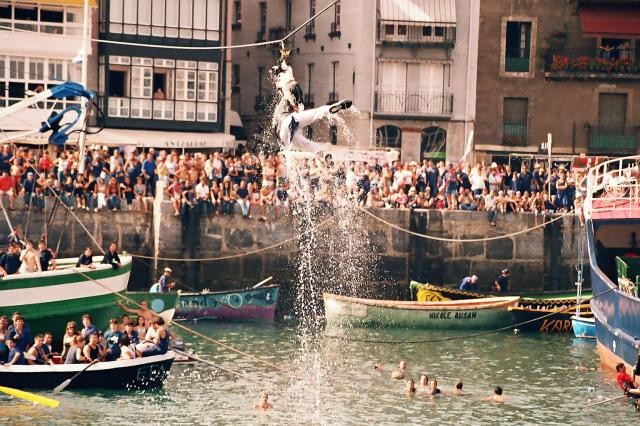
Although the celebrations start with the geese, there's music, street performances and celebrations in the txosnas all day and going into the night (although the evening brings together mostly locals and holidaymakers from the village). Getting bored is impossible!
Durangoko azoka
It's not a "typical" festival but it's a cultural event worthy of enjoying. It's the Durango Basque Book and Record Fair, held in December, this year specifically from the 5th to the 9th.
La Azoka (meaning "market") is set up in the Landako pavilion, in the town of Durango, Biscay. It's really worth going!
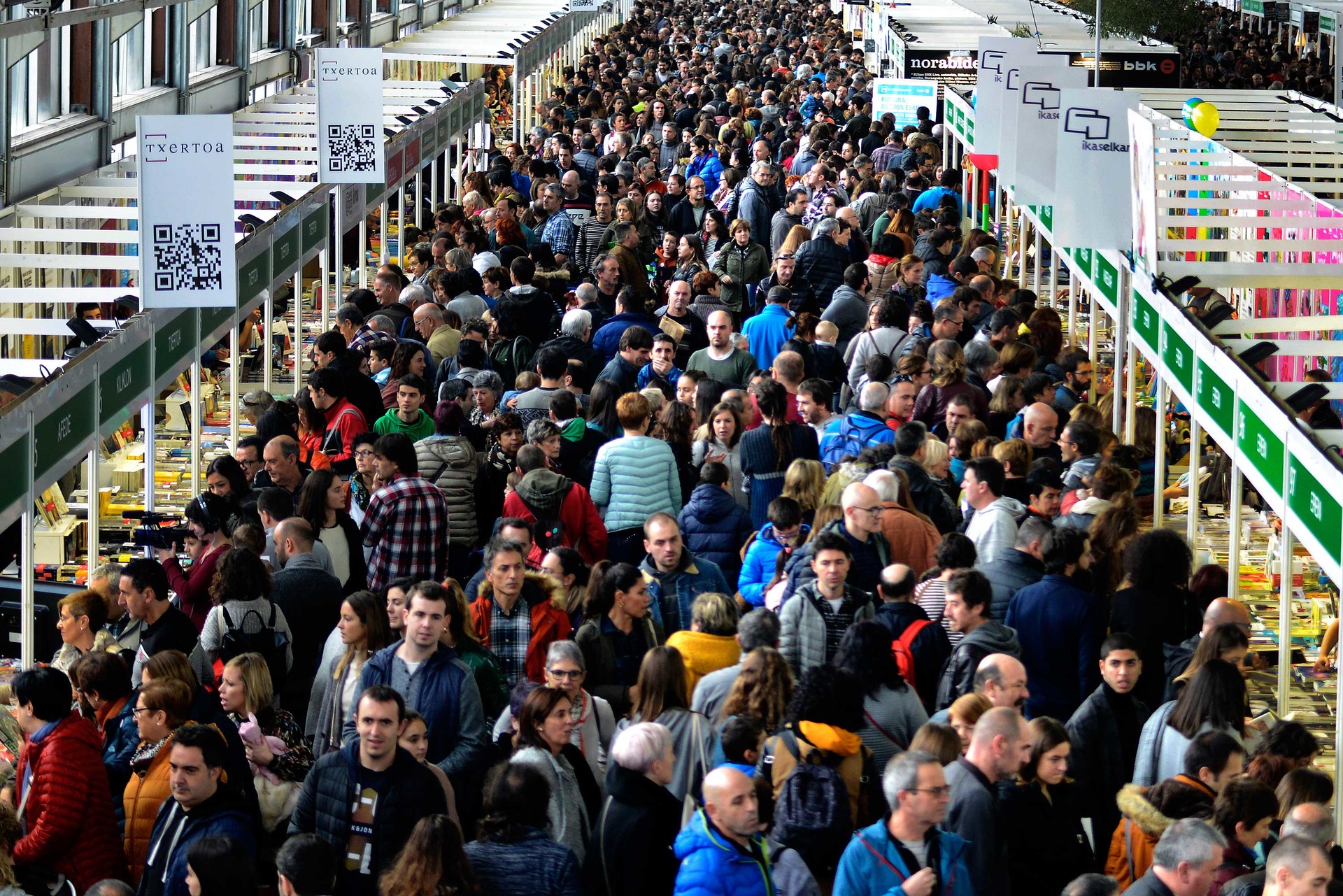
Photo gallery
Content available in other languages
Want to have your own Erasmus blog?
If you are experiencing living abroad, you're an avid traveller or want to promote the city where you live... create your own blog and share your adventures!
I want to create my Erasmus blog! →





























Comments (0 comments)